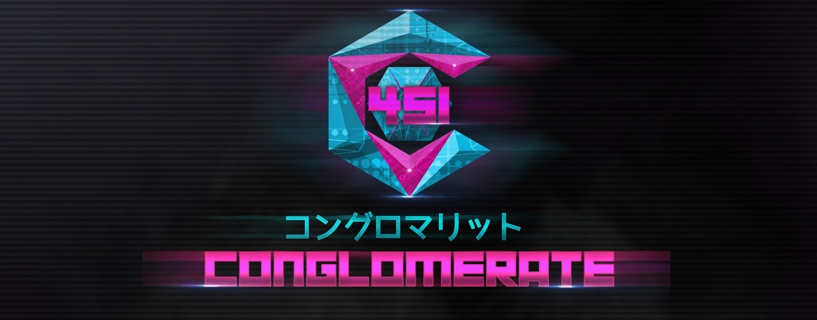Style over substance was a great motto for the world of Cyberpunk 2020. It doesn’t work so well as a game design decision.
Type: Single-player
Genre: RPG
Developer: RuneHeads
Publisher: 1C Entertainment
Release Date: 24 May, 2019


Introduction
Conglomerate 451 is a first-person cyberpunk grid-based dungeon crawler by RuneHeads, developers of Fall of Light, and published by 1C Entertainment.
The game puts you in the position of Director of a new agency contracted to the government to clean up Sector 451 of Conglomerate city. What does that mean? Well, the streets of Conglomerate are ruled by gangs controlled by large corporations. Your job is to use the cloned Ghost Class Agents at your disposal to remove them using any means necessary, thereby presumably restoring Conglomerate to government control.
“The sky above the port was the color of television, tuned to a dead channel.”
(Neuromancer, William Gibson)
Conglomerate 451 is the most overtly cyberpunk-feeling game that I’ve played in a long time, possibly ever. The game looks and sounds great and so many of the cyberpunk subgenre’s stereotypical ideas underpin the game: life is cheap, technology is everywhere, and it rains all the time!
Production values are through the roof right from the start. The title screen is surprisingly subtle. Start a new game and an animated-text introductory sequence plays, with background music reminiscent of the opening scene of Blade. It’s understated and, honestly, the story is not really that original, but it sets the scene well, and the whole sequence is executed perfectly.
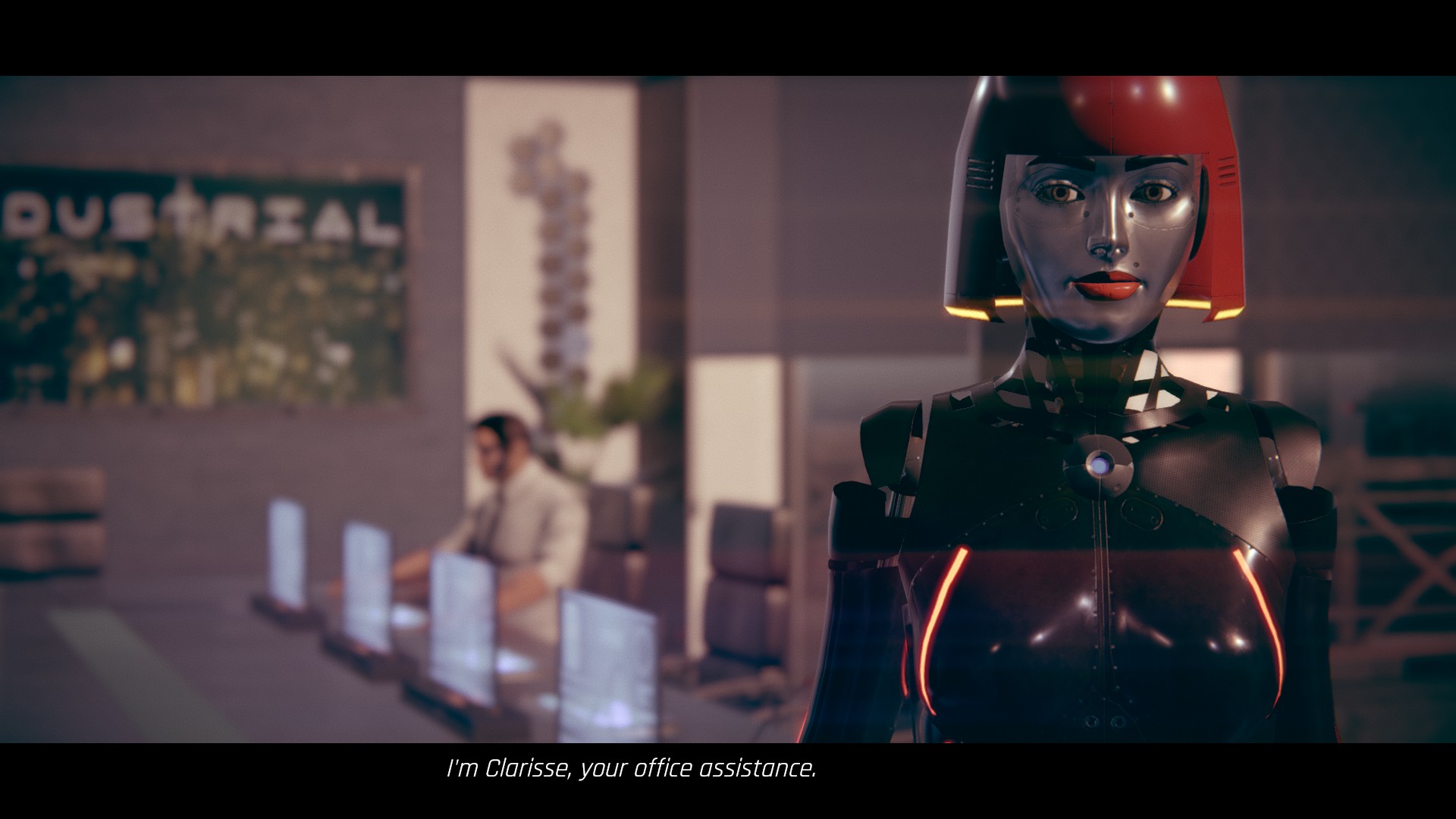
The main menu follows, with a fantastic animated background and your first look at the simple, but very smooth UI skin that stays with you through all of the menu and management parts of the game. Start a new game and Clarisse, your beautifully modelled and spoken android assistant, leads you through a brief tutorial section describing the basics of the office / lab at your disposal. Again, this is all executed perfectly.
Starting my first mission I was wowed by the graphics and sound: easily the most impressive I’ve seen and heard in a dungeon crawler. The Hive — the first area of Conglomerate city that you’ll see — is full of junk, neon, down-and-out cyborgs charging up in deserted alleys, and shops, clubs, vehicles, and other bits and pieces. It looks brilliant, like a real cyberpunk city should, though I did start to wonder what happened to all the residents. Enemy models and the very few non-interactive NPCs you encounter all look excellent and are animated really well. And the ever-present rain and great music soundtrack follow you everywhere, filling the atmosphere with a top-notch sound space.
After this wonderful first impression, I was really excited to get right into the game and see what it had to offer. Unfortunately the developers also seem to have taken Cyberpunk 2020’s motto — style over substance — to heart in the game’s design, too.
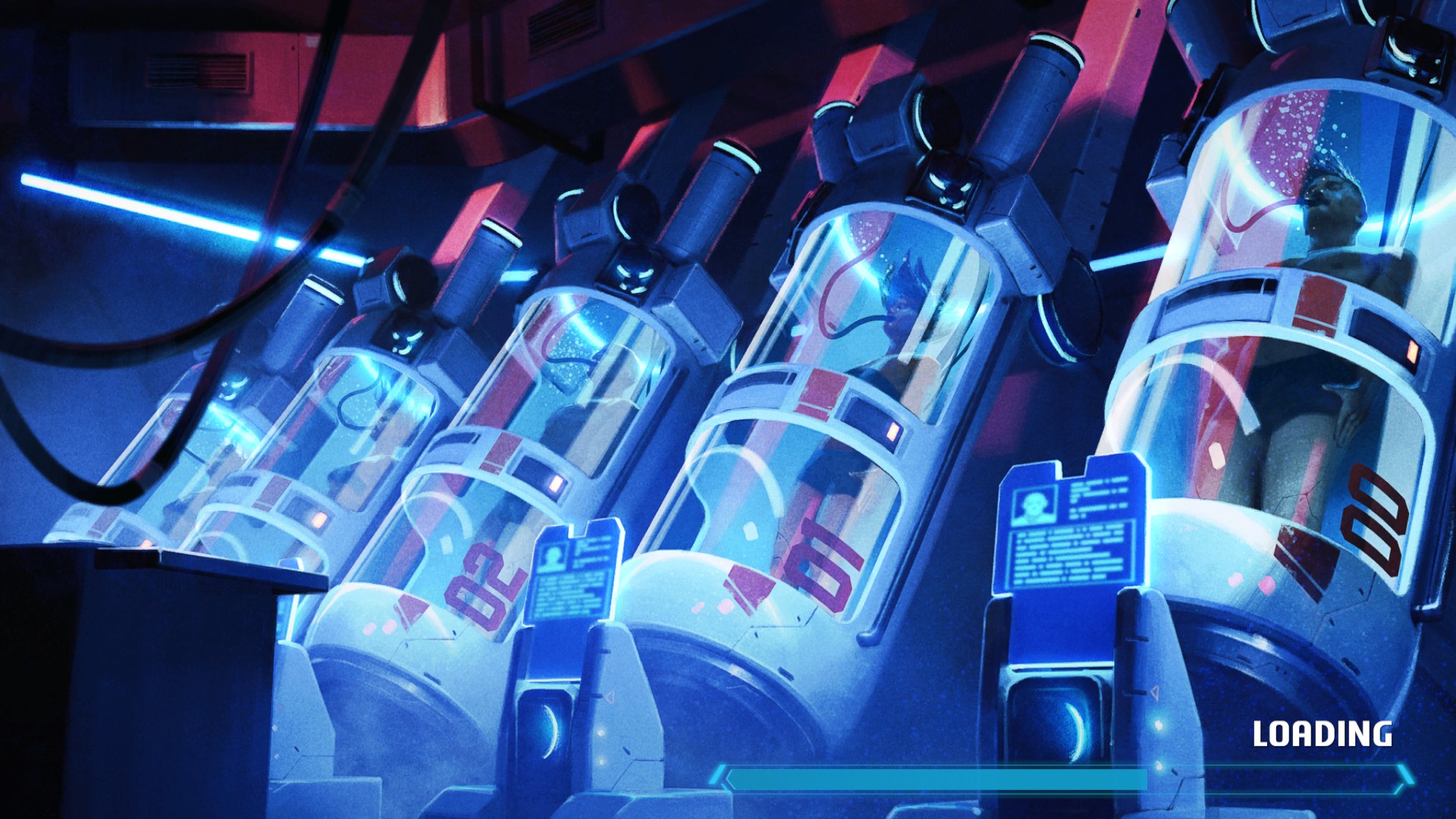
Skin deep
Sadly, I came to realise over the next few hours of play, that that first mission had showed me what I’d be doing over and over, with very little change, for as long as I wanted to play Conglomerate 451, at least in its current Early Access state.
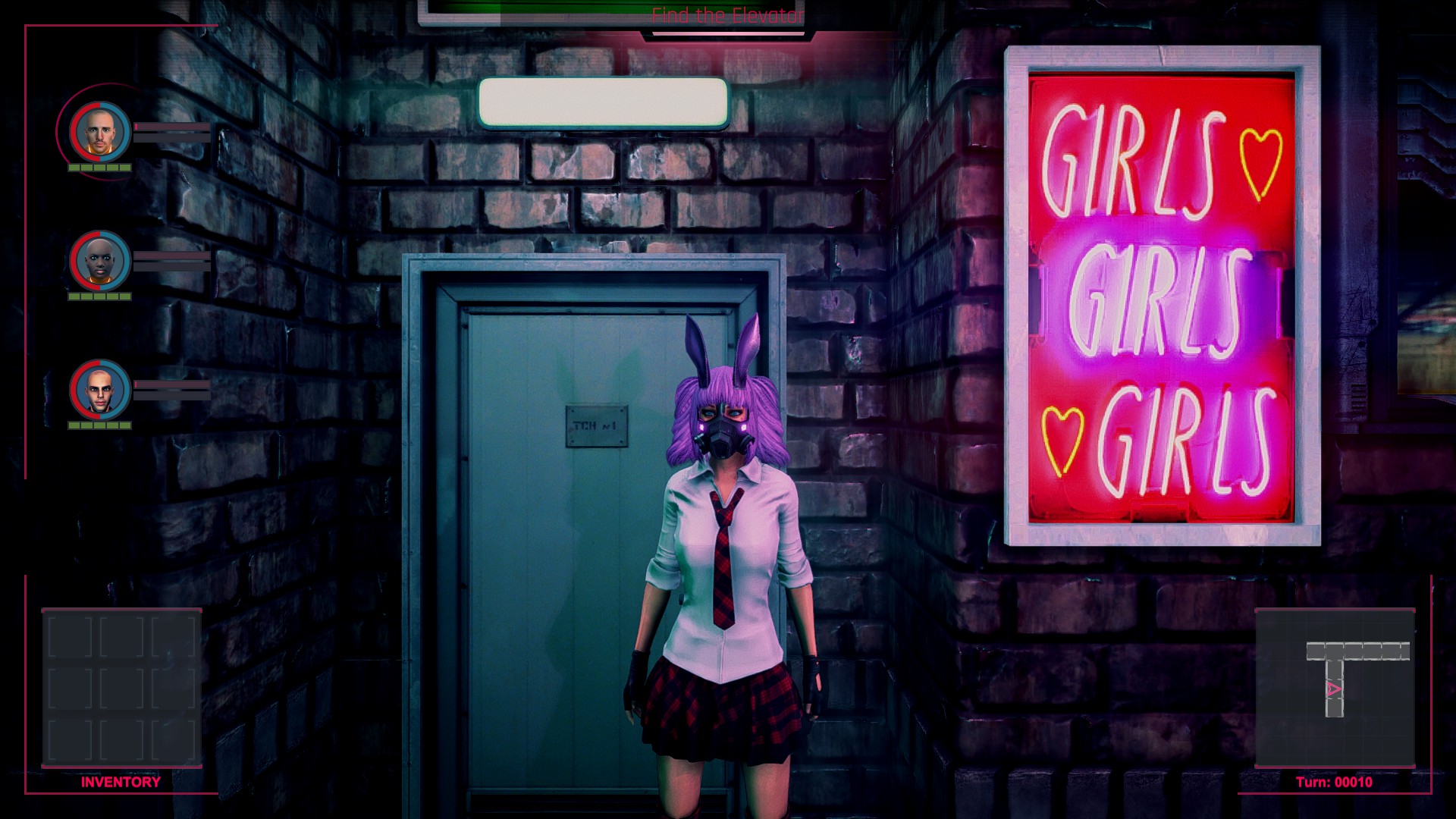
You see, while Conglomerate city ultimately will offer four districts, and the first (and probably others) of these has three distinct areas to explore, each inhabited by a specific gang, the world is so empty and non-interactive that every mission feels exactly the same as every other. In the starting district (Downtown), for example, all the street areas look so similar as to be interchangeable. In both of these almost every mission you take is divided into two sections: exploring the procedurally generated alleyways until you find the elevator (and, optionally, a computer to hack), and then exploring the second level of the mission to find the object, kill the specified number of targets, or interact with the target device.
The optional computer hacking step starts a very basic minigame where you search for a name, IP address, or port number in a slowly cycling window of text. Make three matches before time runs out and you’ll have a single choice of one of the benefits on offer in the second part of the mission: more loot, surprise ambush opportunities, unlock all doors, or a fully revealed map, for example.
In the second part of the mission you’ll also probably encounter a few small loot containers, inside of which you’ll find a small amount of money and “tech”, which can be used for research back at your base. There are also usually some other interactive electronics from which you can extract Shared Processor Units (SPUs): minor upgrade modules for existing weapons, armour, and cybernetic implants.
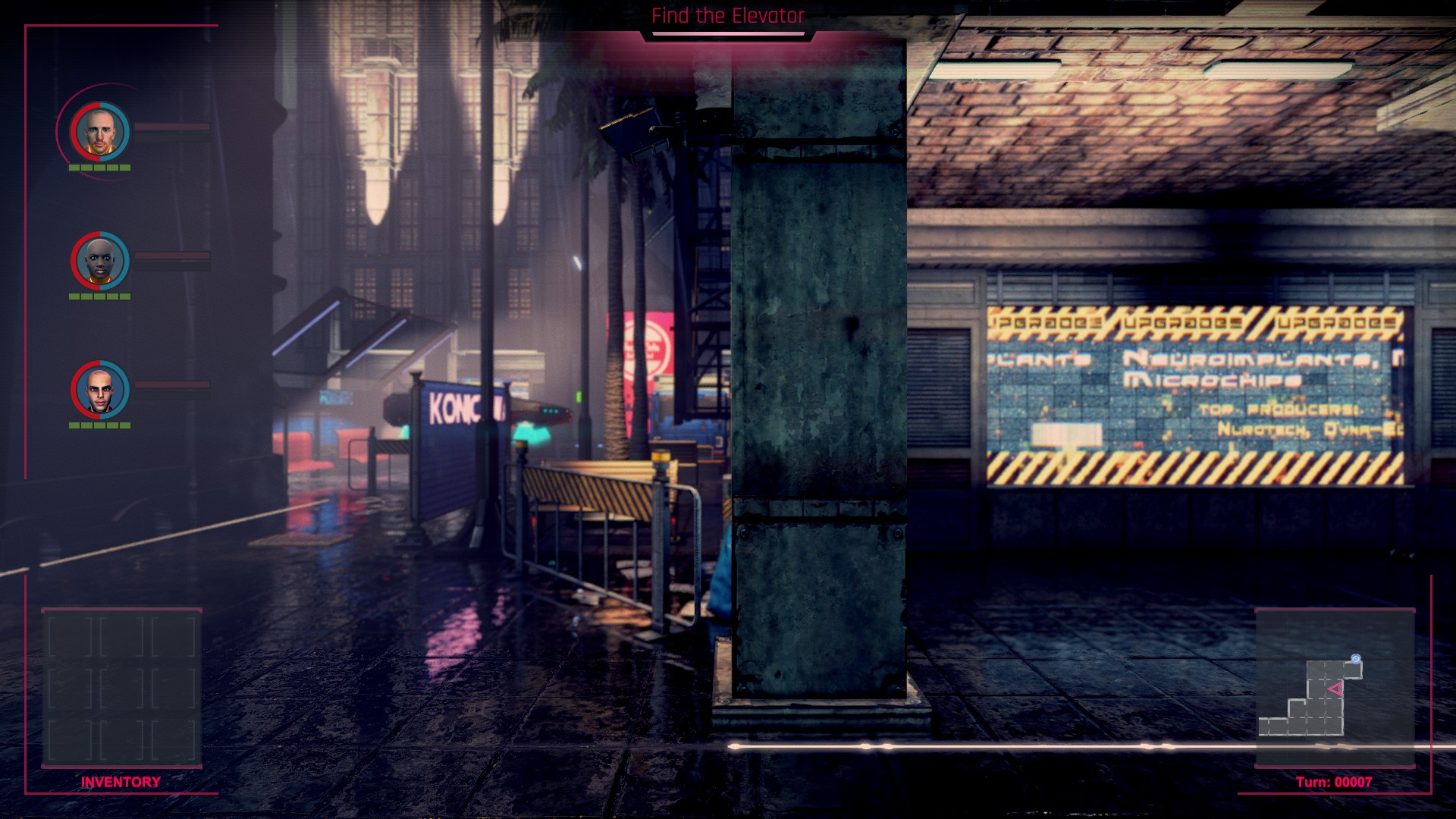
Throughout the mission you’ll encounter at least some unavoidable battle situations with members of the gang that control the area, but since these members seem to be largely interchangeable between the various gangs, they, too, feel the same each mission. These battle situations cause your team of three agents to enter a turn-based combat mode, which usually devolves into you using the same abilities in every battle, over and over again until you win. Combat should be avoided wherever possible, though, since there’s no reward for winning any of these battles, only for looting the few interactive objects on each level and for completing the mission in its entirety.
I’ve seen a few small differences in some missions and a couple of different tilesets (an underground sewer type of place and a bright office building environment), and I think probably less than 10 enemy types. I’d expect a few more differences in the other city districts, but ultimately the world just feels empty, which is such a shame since it looks so good! And playing basically the same mission over and over again some hideous number of times to progress to the next district really doesn’t appeal!
Another battle. Oh joy!
Combat is fun to start with, but, like the whole mission structure, it quickly becomes a chore.
Your team is always three agents at the start of a mission, and combat encounters seemed to be balanced based on that. Agents can die, reducing the effectiveness of your team and making the rest of the mission far more difficult. This is fine.
However, your agents are clones, initially selectable from three different types (expanded to six with research), which you can only customise for each mission initially through selection of four abilities (with some later mutations adding to combat effectiveness in various ways). If you’re like me you’ll quickly hit upon the abilities you like most, and every encounter will essentially play out the same way: using one or two abilities for each character over and over again, with the only difference being which enemy I target first. Specified mission difficulty doesn’t even seem to affect the enemy types encountered in the mission. Instead you’ll see the same old enemies on more difficult missions, but they’ll be bullet sponges who do much more damage as well.
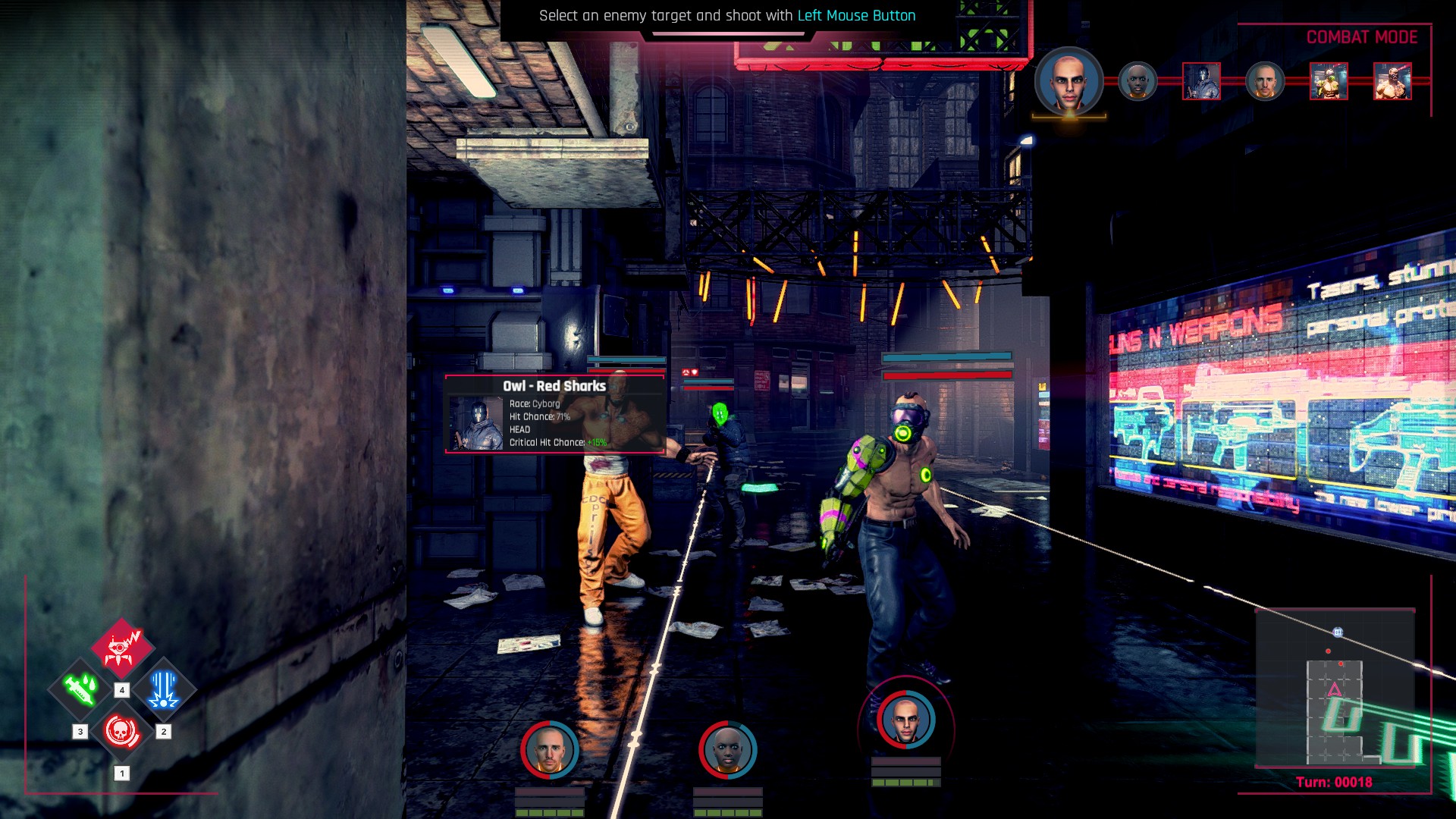
There’s also a very weird design decision taken by the developers to prevent you from using healing or restorative abilities outside of combat. In combat you can heal yourself, remove pain, or restore shields freely as often as you want. Out of combat, though, these actions are unavailable and you’ll start your next encounter with exactly the same values with which you finished the last. This makes absolutely no sense from a game perspective; if the developers didn’t want to implement ability use out of combat then they should have made each character fully restored at the start of each encounter. As it was, I found myself deliberately not killing the last enemy each encounter for however long it took me to heal or restore shields to my party, which really broke the immersion.
Combat itself is turn-based, of course, with order of action determined by initiative. Enemies can both move and attack individually, but for some reason (probably the fixed first-person view?) while your agents can use abilities independently, if you wish to move one of them then you must not take any other actions that turn, and move all three agents as a group. Each combatant has a shield, which normally must be completely reduced before damage to the combatant can be applied. Generally speaking, stun and area-effect abilities are much more powerful than other offensive abilities, and enemies with bladed weapons should be taken out first — they do piercing attacks, so can wound you regardless of your shield status.
Trauma and Progression
Any encounter carries with it the risk of wounding your agents, causing trauma. This only seems to occur on an attack that does damage to the agent’s hit points, so as long as there are no enemies with piercing attacks and your shields are still up, you’re safe. Unfortunately, the game loves to spam you with trauma from fast-moving, blade-wielding enemies, who get the first hit in battle and wound your agents before you can do anything about it. What fun!
Trauma applied as a result of a wound appears to be random. I’ve been stabbed and gone deaf, suffered whiplash, received two broken ribs, and a number of other unpleasant effects. Ultimately these translate to an increase in “pain” — another attribute alongside shield and HP, but the effects of which I don’t know — and some sort of penalty to one of the agent’s attributes: -10 attack, +10 initiative, -5 vision, etc. Each trauma is temporary for two weeks (two missions), after which it becomes permanent if it’s not healed in one of the regeneration vats in your lab.
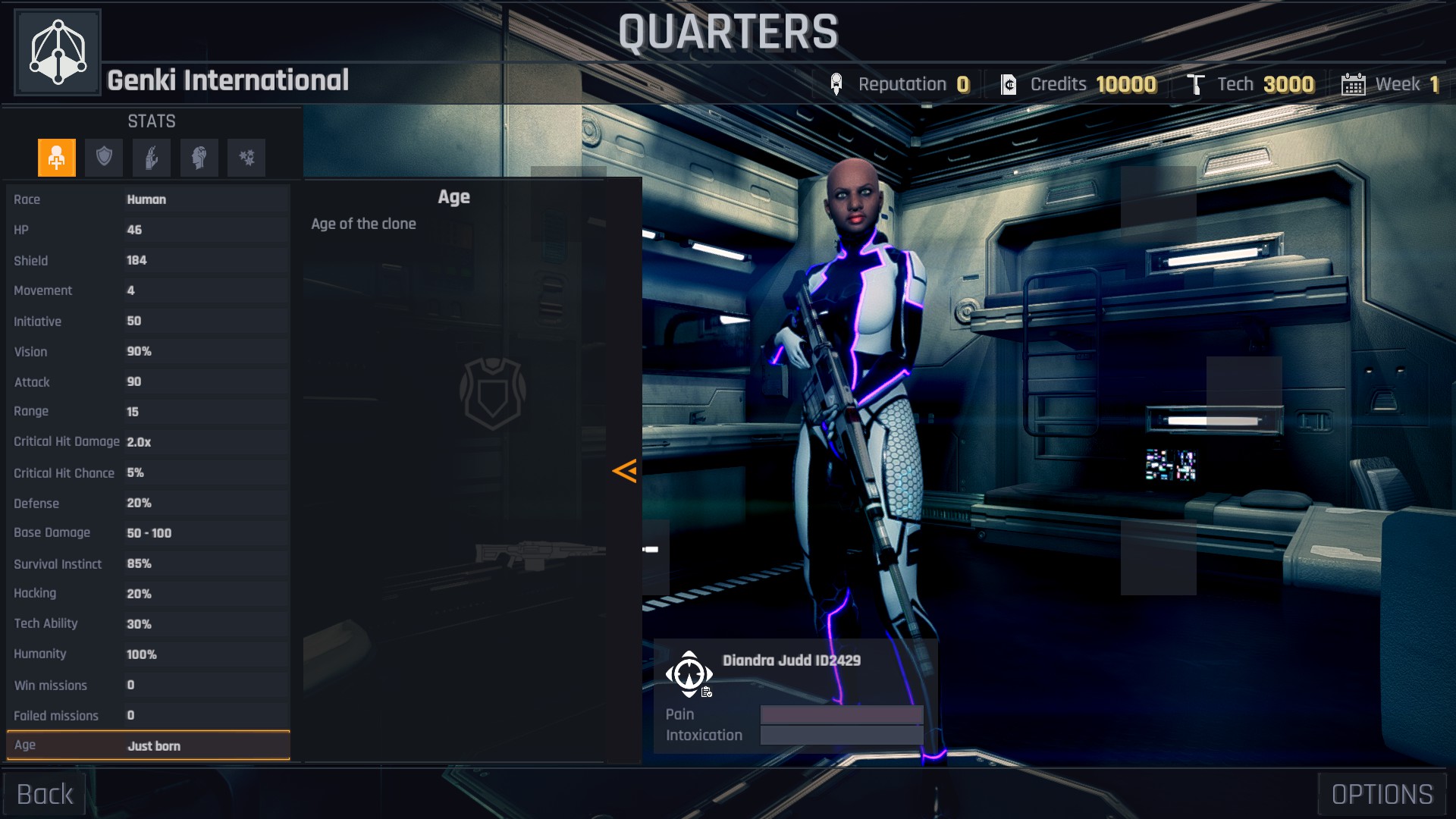
Now, since this is cyberpunk, where life is cheap, a perfectly valid approach is to just ignore the trauma and have your agents gradually reduce in efficiency as you play. After a while you might want to discard the agent and simply create a new clone to replace him or her. There’s one reason you might not want this to happen: progression of equipment and skills / abilities.
Each mission there’s a chance an agent will gain a perk or mastered version of an ability, along with a skill point for successful completion, and perhaps SPUs for updating equipment. Of these only the mastered abilities are available to another clone of that type; everything else is lost on death. Perks are the biggest loss, since they’re rare and can be quite beneficial, though if you’ve unlocked the appropriate research, collected SPUs can add some much needed bonuses to stats, too.
Research
Collected “Tech points” are mainly used in the research hub, where there are five different technology trees to unlock, though in the current version a large portion of most of them is not available yet. Research nodes such as weapon and ability upgrades must be researched before they can be used to upgrade your agents or their equipment. To me this feels like it artificially slows down progression, making an already grindy game even more so.
I’ve also found that the weapon and training research trees both have nodes that are supposed to lower the cost of future research from that tree, but having unlocked two of them so far and checked the costs before and after, I believe they simply don’t work. The costs for these are also questionable, since the 10% saving they’re supposed to offer would require most of the tree to be unlocked in order to break even for the cost of the node itself. I suspect I must be missing something here, but it seems these nodes are useless.
Rogue like
Conglomerate 451 includes a couple of Rogue-like elements: perma-death and procedural generation. In line with this, there are no individual saves: it’s basically a forced “ironman” mode. I actually like this, apart from two very frustrating design decisions that the developers have made around it: there’s no way to save mid-mission, meaning that if real life intrudes you’ll have to leave the game running or quit and take the “failed mission” hit; and the game is currently buggy enough that I’ve had to alt-tab and kill it a number of times already, and with no way to save it before doing so, each time causes me to fail the mission.
Worse still, it looks to me like it does at least have some in-mission auto-saving, since after a freeze and quit and reload of a mission in which one of my agents had died, when I reloaded the game and arrived back at my base, that agent was still dead. It’s terribly frustrating that the developers haven’t implemented a proper mission save mechanism yet.
Procedural generation also falls pretty flat. While the world has some amazing graphical resources, particularly in the first section of each mission, there are only very, very few ways in which these pieces fit together to make the levels. There needs to be MUCH more variation here to hold my interest and prevent every mission feeling the same as the previous one, particularly with so few enemy types as well.
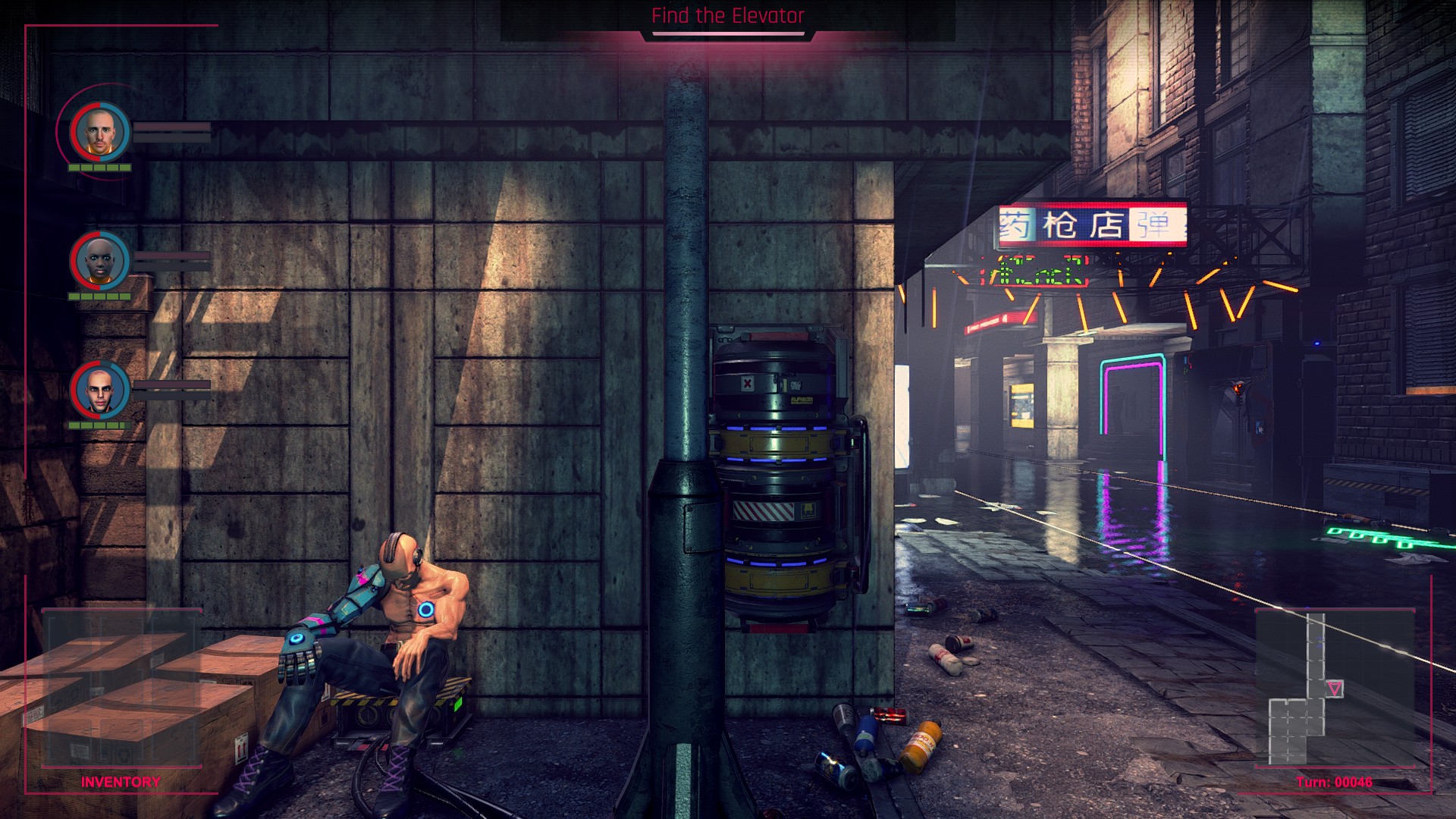
Other Considerations
The game is still in Early Access, so I feel some allowances should be made for its incomplete and, let’s face it, rather buggy state. But it’s still worth mentioning these factors, since anyone purchasing the game now will have to deal with them.
I’ve already mentioned the freezes requiring me to alt-tab and kill the game (thereby failing the active mission). These are extremely frustrating, but still not entirely game breaking. Even less important are the few errors in the in-game text and the few strangenesses in the UI, such as tooltips only working sometimes, and only for your agents (not enemies); or the “Assign Agent” button being rather confusing to use (it’s not just me — I found a discussion thread from someone else who couldn’t work it out either). Other little UI niggles also detract from the experience, such as not being able to see effects of specific traumas when in the regeneration interface, not enough information given on most attributes, and some important functions not described at all, such as batteries, SPUs, and pain.
I’ve also mentioned the lack of in-mission interactivity and each level seeming the same as the previous. This is compounded by combat encounters being completely unrewarding from a game point of view, and there being no “cool stuff” to find as you play; you can never change any of your equipment or find anything to make it better, apart from incremental improvements from SPUs. This all amounts to the exploration and role-playing parts of the game being very limited, indeed.
Other issues are that wounds and trauma are effectively unavoidable, hacking is buggy (I had one instance where the entry that should have been right wasn’t, but one of the incorrect ones let me proceed), some perks don’t work (e.g. EnergySucker), body part aiming seems hopeless (apart from the head; why bother aiming for an arm or leg when there’s no way to cripple or disarm), targets can be “covered” in plain sight right in front of you, “Remove all debuffs” doesn’t, and combat animations are very slow, especially when waiting for an enemy melee opponent to close — I can imagine people wanting to skip these.
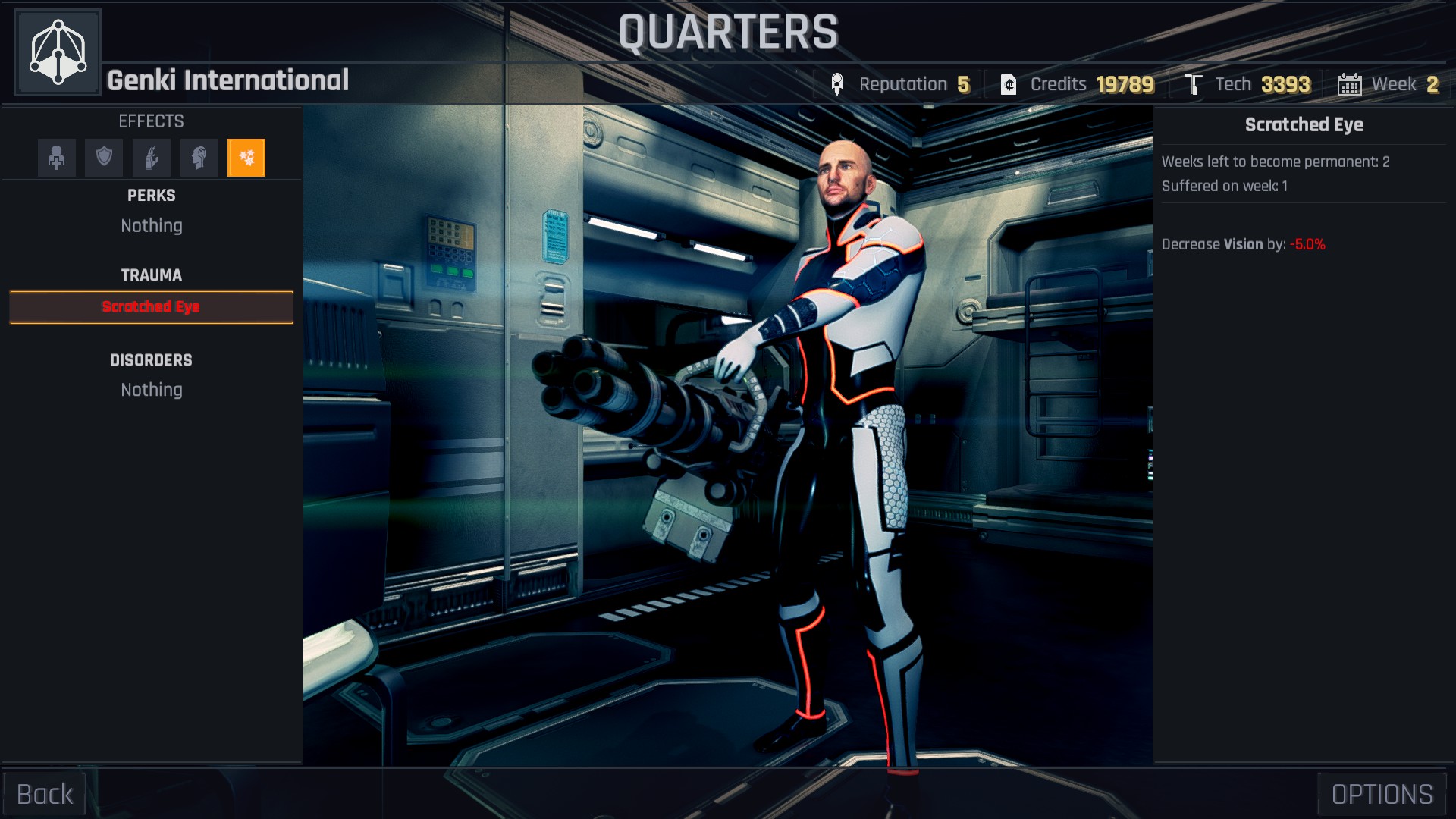
Verdict
I really want to like Conglomerate 451, far more than I actually do.
That wonderful first impression still sticks with me, making me think that the game could be so much more. There needs to be more variation in the world, enemies, and in-game interactions; it needs more breadth. But even looking at the roadmap published on the Steam store page for the game, I can’t see anything that stands out as offering that. Sure, there will be more districts, some bosses, and a couple of new mission types. But when almost every mission in the first district seems the same as the last, I don’t think I will be able to force myself to play the game long enough to see those things.
But the game needs to go deeper, as well: give the player a reason to engage in combat, or to explore; populate the wonderful-looking world with interesting things to find and encounter, rather than leaving it as the beautiful, but empty, shell that it is now. For me, at least, I simply can’t see enough to do in the main gameplay loop to hold my interest, and I guess that’s the clincher: if I don’t want to play any more of Conglomerate 451 now, then it would be hypocritical of me to recommend it to anyone else.
I hope this won’t still be the case when the game leaves Early Access, but for now, no matter how beautiful it looks and sounds, there’s just not enough game here to warrant the asking price.

